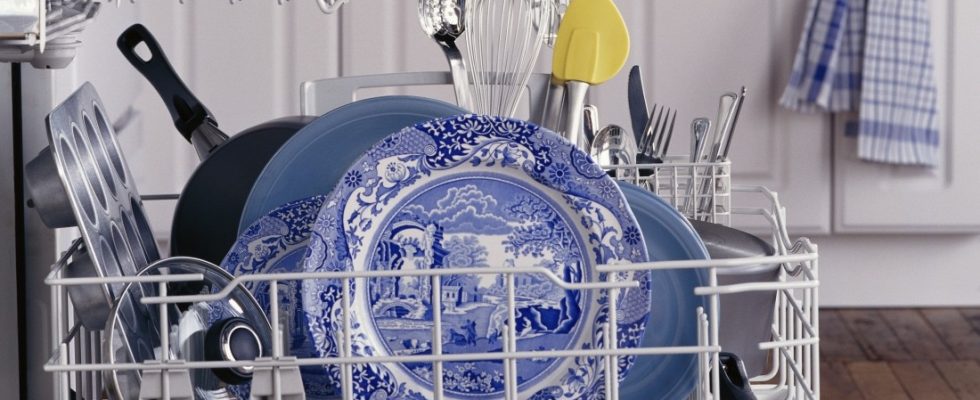The number of dumb servants in the household is increasing. One of the oldest among them is the dishwasher, although: only newer generations of machines do their work really silently, while the older ones in houses with bad soundproofing should not run at night. In addition to noise, some devices attract attention with bad smells, especially in midsummer, a condition that is difficult to ignore. Because when the temperatures are muggy, the unwashed dishes quickly start to smell.
The tsatsiki from the day before yesterday, for example, as good as it was, but meanwhile the leftover cucumber and garlic are beginning to develop an odor that thoroughly spoils the desire for the next Greek evening. Many leftovers from favorite foods develop an unpleasant life of their own in the dishwasher. It doesn’t help much to always close the flap thoroughly.
Sometimes it helps to put half a lemon in the cutlery basket
What to do? Of course, one possibility would be to run the dishwasher more often in the summer. Another is pre-rinsing the odor-intensive dishes. Both, however, collide with the ecologically sensible effort to switch on the machine only when it is fully charged. Other people manage with dishwasher deodorants, which are stuck to the inside wall or hung in the basket like toilet blocks.
A natural alternative to chemical deodorant with a citrus scent is to put half a lemon or two in the cutlery basket or spear it on a plate rack. If none of that works, it’s time to realize that a dishwasher also needs care.
So if there is still a strong smell even after washing, the cause lies deeper and there is nothing left but to deal with the inner workings of the dishwasher compartment. There, the coarse sieve should be removed regularly, cleaned with a brush and any food residue that may have accumulated underneath it should be removed. Anyone who now discovers slippery dirt edges here has determined the cause of the odor development: pump sump. This film of protein and leftover food is a haven for germs that are not only olfactory, but also hygienically questionable.
The machine should therefore run empty once a month with a machine care product at a temperature of at least 60 degrees. Fats, proteins, lime and germs are eliminated in this way. The same result can be achieved with three tablespoons of citric acid in the tablet compartment and four to five tablespoons of baking soda scattered on the bottom of the machine.
Anyone who still discovers limescale residues on the spray nozzles should also take them out and place them in a decalcification bath. Blocked nozzles can be cleared with a toothpick. Finally, clean the rubber seals with a soft cloth and some washing-up liquid. Then you can stop breathing shallowly at the sink and breathe deeply and proudly again. After all, it’s a good feeling to have something unpleasant cleaned up.
For pre-rinsing without wasting water, the author uses pasta or other cooking water – if available.
(Photo: Bernd Schifferdecker (Illustration))

